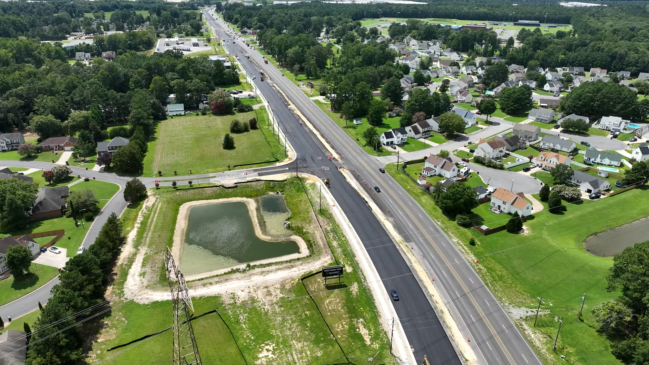
Suffolk’s traffic camera project, meant to reduce crash severity, has entered its final stage: The installation of the city’s first red light cameras.
Seven red light cameras will be put in place this spring at accident-heavy intersections throughout Suffolk. They will take photos of cars that run red lights and send ticket notices to the drivers.
Suffolk has long had concerns about its roads and traffic. The city has grown nearly 16.5% since the 2010 census, and its U.S. 58 expansion and growing warehouse traffic has been a hot-button issue for residents.
Bryan Harris owns a horse farm on Lake Cohoon Road near downtown. He told the City Council at an August 16 meeting their road studies are inadequate.
“Traffic is a top concern for this city,” Harris said.
Despite Suffolk’s growth, car accidents have stayed fairly static since 2016. But Suffolk public works director Robert Lewis said the cameras will help slow traffic, making accidents less serious when they do occur.
Lewis said two cars colliding at 35 miles per hour is very different from two colliding at 65 or 70.
A 2017 study from the Insurance Institute for Highway Safety found that traffic cameras reduced fatal crashes at signal intersections by 14%.
In 2020, the General Assembly passed a law authorizing localities to use speed-monitoring cameras in work zones and school zones. The law provides for one speed camera per 10,000 residents, meaning Suffolk can install nine. Lewis said one is delayed because of construction and the city is holding the last one in reserve for future use.
Camera installation began in earnest in mid-2023, when Suffolk implemented both work zone cameras and cameras on school buses. By November, the city had collected $5 million in revenue from paid tickets.
Lewis said the money generated from tickets goes to two places: it pays the camera vendor the city contracts with and funds traffic safety enhancements.
Those enhancements are meant to be one-time expenditures, such as putting in new crosswalks and streetlights.
“In the early days, the violation rate was much, much higher,” Lewis said. But that rate is dropping, which Lewis said is what the city wants.
“Hopefully it's a diminishing revenue, and each month as people recognize they need to slow down, that revenue will get to be less and less,” he said.
“I tell people all the time, I don't want your money. I just want you to be safe. I don't want to see anybody get hurt,” he said.




